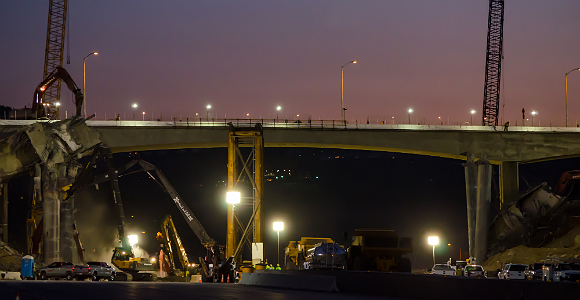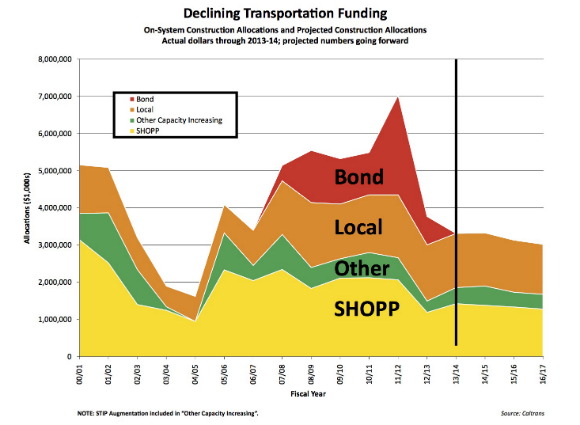
(Photo credit: Steve Hymon/Metro)
Originally published on California Alliance for Jobs.
Spending on transportation has not kept up with our growing population and aging infrastructure for many years. But now, state funding is being cut in half, and this transportation fiscal cliff will only make matters worse.
California’s transportation system was once the envy of the world. In the 1950s, ‘60s and ‘70s we built highways, freeways and the West’s first postwar mass transit system.
But for too many years, we failed to make the investments needed to properly maintain it — and the Legislature frequently raided highway accounts to backfill state budget shortfalls. As a result, our aging roads and highways began to take a beating.
State and local governments maintain more than 50,000 miles of state highways and 143,000 miles of local streets and roads – more than half of which are still in desperate need of rehabilitation or repair. Even more worrisome is that Caltrans is operating at a $6 billion annual deficit to maintain and repair the state highway system. Every dollar we defer on timely maintenance requires the expenditure of $4 to $10 in major rehabilitation or reconstruction costs.
Clearly, the longer we wait to implement a sustainable transportation funding plan, the higher will be the cost.
Most important, California needs to develop a revenue stream that will cover the cost of maintaining our existing system.
Total state and local investment peaked at just under $6 billion in 2011-12. But that figure is falling to about $3 billion a year for the foreseeable future unless action is taken.
As the California Transportation Commission warned in its 2011 Statewide Transportation Needs Assessment:
“California’s transportation system is in jeopardy. Underfunding—decade after decade—has led to the decay of one of the state’s greatest assets.”
The report also found that:
- repair and maintenance needs will exceed expected funding by $295 billion through 2021.
- 58 percent of state roads need rehabilitation and/or pavement maintenance.
- 20 percent of state bridges require major maintenance or preventative work.
- and 6 percent of the state’s bridges need to be replaced.
At the local level, 55 percent of roads need to be repaired or replaced. And the problems will only get worse. The Transportation Commission projects that the percentage of roads in failed condition is expected to climb from 6.6 percent to 25 percent by 2020, and that 38 percent of local bridges will be structurally deficient by then.
The continued neglect of the state’s infrastructure is a threat to our economy as well, warns the advocacy group Transportation California:
“California deserves a 21st Century integrated transportation system. Our ability to attract (and retain) world-class companies to California is becoming increasingly dependent on our ability to deliver a modern transportation system which can efficiently move goods and service around and through our state.”
The transportation community is continuing to develop possible solutions to the Transportation Fiscal Cliff. Check back in the months to come to see updates.
Watch our videos:


